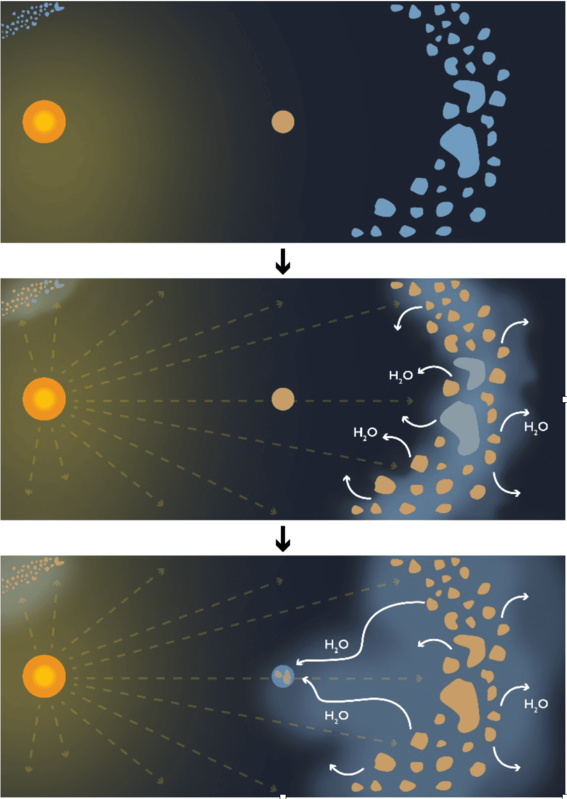Water is an essential element for life on Earth, yet scientists believe that the young Earth was devoid of it at the time of its formation. Located too close to the Sun, our planet would have been too hot to retain water at its origin. Current theories therefore suggest an influx of water from outside, during the first 100 million years of the Earth’s history.
Until now, the prevailing theory has been that icy, comet-like bodies collided with the Earth, bringing water with them. However, this scenario requires a cosmic “billiard game”, where complex dynamic mechanisms send these icy objects towards the Earth, at a precise moment and in sufficient quantity. To say the least, this scenario is questionable in terms of its robustness, and its universality across all extrasolar systems.
On the basis of precise data from isotopic measurements in the Earth’s atmosphere, as well as recent asteroid observations (notably the results of space missions that have come close to asteroids, such as Hayabusa 2 and OSIRIS-REx), a new model for the evolution of the asteroid belt has been set up and then tested on terrestrial data.
In addition, observations of extrasolar disks, related to our asteroid belt, were carried out using the ALMA radio telescope, to test the universality of this new water supply mechanism, which could potentially be successfully applied to a variety of extrasolar systems.

The new study proposes an alternative mechanism, less random and not requiring direct impacts with the Earth.
If, as we think today, asteroids formed, icy, in a cold primordial disk, then as this young disk disappeared, the asteroids, warming up, gradually released their ice in the form of water vapour. This water vapour then formed a new, predominantly water-based disc surrounding the asteroid belt and orbiting the Sun.
Under the effect of dynamic forces, this disk of water vapor gradually spread out, eventually reaching the inner planets of the Solar System, including the Earth. When they found themselves in this bath of water vapor, the planets were able to capture some of it, contributing to the formation of oceans.
This mechanism can also explain the presence of water on other planets in the Solar System. With universal applicability, it offers a promising avenue for identifying exoplanets capable of harboring water and, potentially, life.
Reference
Quentin Kral et al, "An impact-free mechanism to deliver water to terrestrial planets and exoplanets", A&A, 3 décembre 2024.
